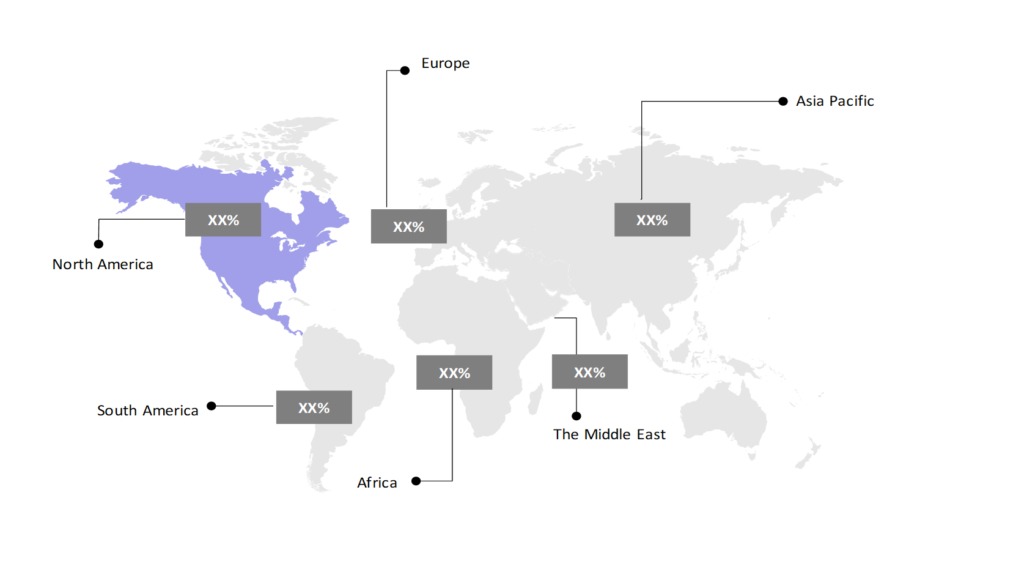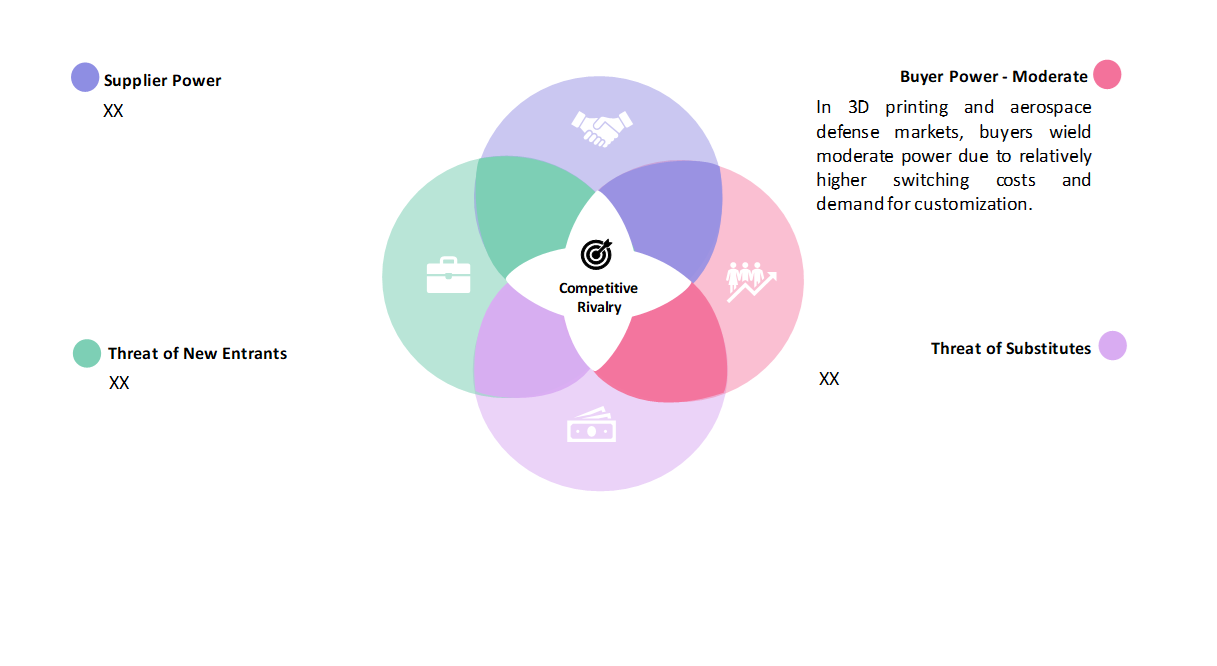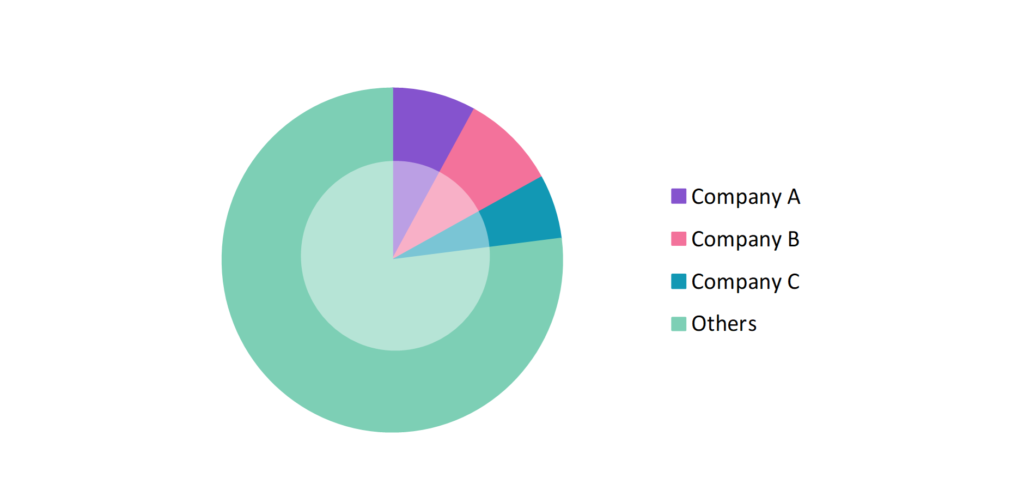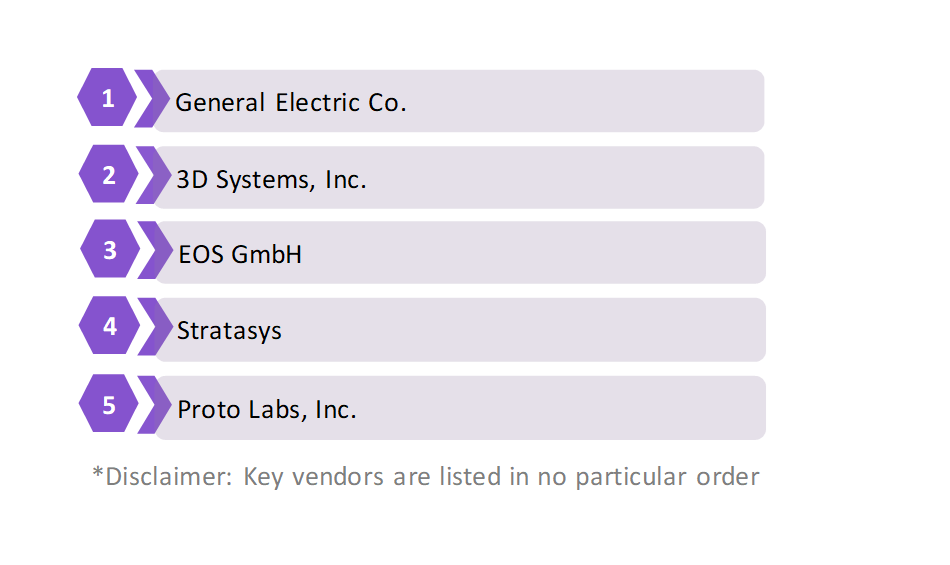3D Printing In Aerospace & Defense Market Insights: Size, Share, Growth Analysis & Forecast (2024-2029)
The report covers a comprehensive analysis segmented by Material (Metal Alloys, Ceramics, Carbon Fiber, Polymers, Composites, Others), by Printer Technology (Fused Deposition Modeling (FDM), Stereolithography (SLA), Selective Laser Sintering (SLS), Electron Beam Melting (EBM), Others), by Offering (Hardware, Materials, Software, Services), by Application (Engine Components, Structural Components, Maintenance and Repair, Interior Components, Prototyping and Tooling), By Geography (North America, South America, Asia Pacific, Europe, The Middle East, Africa)
3D Printing in Aerospace and Defense Market Snapshot

3D Printing in Aerospace and Defense Market Overview
The global 3D printing in aerospace and defense market is estimated to be at $4.34 Bn in 2024 and is anticipated to reach $8.4 Bn in 2029. The global 3D printing in aerospace and defense market is registering a CAGR of 14.12% during the forecast period 2024-2029.
3D printing, also known as additive manufacturing, has gained widespread popularity in the aerospace sector. In an industry where reducing weight or drag can result in significant cost savings, 3D printing has made it possible for aerospace makers to construct lighter and more fuel-efficient aircraft at lower costs. Aerospace engineers, for example, can design lightweight components without sacrificing structural integrity by combining advanced materials like titanium and composites with 3D printing technologies such as Direct Metal Laser Sintering (DMLS) and Selective Laser Sintering (SLS). This achievement has far-reaching ramifications for airplanes, as lighter constructions help to improve fuel efficiency, range, and overall performance.
A wide range of end-use items, including control consoles and nozzles, can be produced using 3D printing in the aerospace industry. This technology can also be utilized to support specific aircraft applications in addition to supporting manufacturing processes. It is projected that materials science and 3D printing technology will be applied more extensively in critical aerospace and defense applications. The next wave of innovation in aerospace and military will be mostly driven by 3D printing, if there are increased investments made in R&D and cooperative efforts are made to develop standards.
As the national military expands into space, the use of 3D printing technology can assist both sectors align their objectives and achieve success. For instance, in October 2023, BAE Systems, the UK’s largest defense contractor, announced the acquisition of Ball Aerospace, a major aerospace business, for $5.5 billion. BAE Systems has previously recognized the possibilities of 3D printing in the aerospace business. The acquisition of Ball Aerospace by BAE Systems highlights the strong alignment of the aerospace and defense industries. Companies like BAE Systems can stay ahead of the competition and contribute to breakthroughs in national defense by leveraging the possibilities of 3D printing technology. Furthermore, new 3D printing research projects emerge regularly. In one such scenario, in March 2024, researchers from UBC Okanagan collaborated with Drexel University, Pennsylvania, to discover a novel substance called MXene, which has significant promise for 3D printing antennas in the space and satellite industries.
3D Printing in Aerospace and Defense Market Coverage
| Historical & Forecast Period | 2018-2029 |
| Base Year | 2023 |
| Forecast Period | 2024-2029 |
| Units | Billion US$ |
| Segments | Material, Printer Technology, Offering, Application |
| Geographies | North America, South America, Asia Pacific, Europe, the Middle East, Africa |
| Key Vendors | General Electric Co., 3D Systems, Inc., EOS GmbH, Stratasys, Proto Labs, Inc. |
Key Geographies of 3D Printing in Aerospace and Defense Market, 2023

Porter’s 5 Forces Analysis of 3D Printing in Aerospace and Defense Market

3D Printing in Aerospace and Defense Market Trends
3D printing is transforming space travel by allowing astronauts to produce crucial things on demand throughout their missions. This eliminates the need for costly and time-consuming supply lines between Earth and the International Space Station, allowing for the rapid and cost-effective manufacture of replacement parts for diverse aerospace components. Significant reductions in production costs and lead times, as well as the flexibility to modify weapons and equipment, are some of the most prominent benefits. Manufacturers also anticipate boosting productivity by completely adopting additive manufacturing.
The development of in-orbit 3D printing technology open prospects for on-demand manufacturing and repair of space-based components, minimizing the need for extensive pre-launch fabrication. Integrating machine learning algorithms into 3D printing processes can improve design optimization, material selection, and process control, resulting in more efficient and dependable manufacturing. Drawing inspiration from nature, bio-inspired design approaches can impact the production of lightweight and sturdy structures, hence contributing to advancements in aerospace and defense applications.
Additionally, businesses may benefit monetarily from the use of 3D printing through the Research and Development (R&D) Tax Credit. This tax credit is offered to businesses that create new or enhanced software, processes, or products. The R&D Tax Credit may be applied to the wages of technical staff members who work on 3D printed prototypes and to the time invested in integrating 3D printing hardware and software. It is also possible to recuperate the costs of the filaments used throughout the development process.
3D Printing in Aerospace and Defense Market Driving Factors
The rise in additive manufacturing’s applications has led to a significant increasement, where it can replace traditional methods for manufacturing commercial and military aircraft parts. This shift offers benefits such as lower costs, shorter lead times, and more digitally flexible designs. These development methods are expected to drive 3D printing in the aerospace market during the forecast period. In December 2023, the Austrian business Lithoz GmbH and the US Department of Energy’s Oak Ridge National Laboratory (ORNL) signed a Cooperative Research and Development Agreement (CRADA) to accelerate the development of high-temperature ceramics. The partners are thus collaborating to create 3D-printed non-oxide ceramic parts capable of withstanding exceptionally elevated temperatures. These types of collaborations are expected to increase the market value of 3D printing in the aerospace and defense industries.
The aerospace and defense industries are seeing a rise in patent filings, which stimulates innovation and investment in 3D printing technology and advances materials, processes, design, and supply chain management. Airbus is a leading patent holder in aerospace 3D printing. The company is using 3D-printed lighter parts to retrofit aircraft and produce prototype airplanes and components to reduce emissions, improve fuel and resource efficiency, and capitalize on the quick and highly flexible manufacturing capability.
3D Printing in Aerospace and Defense Market Challenges
3D printing’s growth was expected to be restricted by the high cost of parts and the scarcity of materials. Although there are several benefits to 3D printing in the manufacturing sector, there are not many raw materials available. This is because some metals and polymers cannot be sufficiently heated or cooled to support 3D printing. Furthermore, very few of these printing materials are safe, and many of them cannot be recycled.
Strict certifications and regulations govern the operations of the aerospace and defense sectors to guarantee the dependability and safety of their goods. However, the distinctive features of 3D printing make standardization and certification procedures difficult. For 3D printing to be consistent, traceable, and compliant with regulations in these sectors, standard procedures and processes must be established. Maintaining the uniformity and caliber of materials produced by 3D printing is still a major challenge. Strict quality control procedures and guidelines must be implemented in order to guarantee the durability and reliability of components made with additive manufacturing methods.
3D Printing in Aerospace and Defense Market – Key Industry News
- In January 2024, Mitre and the Office of Naval Research (ONR) developed a small unmanned aerial vehicle (UAV) known as “Hopper”, designed for maritime applications like surveillance, search and rescue, and meteorological event detection, and it demonstrates innovation in both functionality and sustainability. Using modern simulation software, CAD, and 3D printing techniques, the Mitre-ONR team completed the quick creation of the Hopper prototype in under two years.
- In October 2023, Airbus Helicopters established a new 3D printing unit at its main production location in Donauworth, Germany. The company uses three types of 3D printing equipment to make composite components out of titanium, plastic, and aluminum.
- In January 2023, Mark3D UK, a based 3D printing solutions company focusing on Markforged technology, announced the formation of a new Aerospace and Defense Division situated at the United Kingdom’s iAero Centre to promote the use of additive manufacturing in the sector.
3D Printing in Aerospace and Defense Market Competitive Landscape
The participants in the global printing in the aerospace and defense industry are always developing their strategies to preserve a competitive advantage. Companies primarily use acquisitions, R&D, partnerships, and technological launches. Several important entities in the 3D printing in aerospace and defense market include General Electric Co., 3D Systems, Inc., EOS GmbH, Stratasys, Proto Labs, Inc., and others.
3D Printing in Aerospace and Defense Market Company Share Analysis, 2023 (%)

3D Printing in Aerospace and Defense Market – Key Companies

Reason to Buy from us

Table of Contents
| 1. Introduction |
|---|
| 1.1. Research Methodology |
| 1.2. Scope of the Study |
| 2. Market Overview / Executive Summary |
| 2.1. Global 3D Printing in Aerospace and Defense Market (2018 – 2022) |
| 2.2. Global 3D Printing in Aerospace and Defense Market (2023 – 2029) |
| 3. Market Segmentation |
| 3.1. Global 3D Printing in Aerospace and Defense Market by Material |
| 3.1.1. Metal Alloys |
| 3.1.2. Ceramics |
| 3.1.3. Carbon Fiber |
| 3.1.4. Polymers |
| 3.1.5. Composites |
| 3.1.6. Others |
| 3.2. Global 3D Printing in Aerospace and Defense Market by Printer Technology |
| 3.2.1. Fused Deposition Modeling (FDM) |
| 3.2.2. Stereolithography (SLA) |
| 3.2.3. Selective Laser Sintering (SLS) |
| 3.2.4. Electron Beam Melting (EBM) |
| 3.2.5. Others |
| 3.3. Global 3D Printing in Aerospace and Defense Market by Offering |
| 3.3.1. Hardware |
| 3.3.2. Materials |
| 3.3.3. Software |
| 3.3.4. Services |
| 3.4. Global 3D Printing in Aerospace and Defense Market by Application |
| 3.4.1. Engine Components |
| 3.4.2. Structural Components |
| 3.4.3. Maintenance and Repair |
| 3.4.4. Interior Components |
| 3.4.5. Prototyping and Tooling |
| 4. Regional Segmentation |
| 4.1. North America |
| 4.1.1. The U.S |
| 4.1.2. Canada |
| 4.1.3. Mexico |
| 4.2. South America |
| 4.2.1. Brazil |
| 4.2.2. Argentina |
| 4.2.3. Colombia |
| 4.2.4. Chile |
| 4.2.5. Rest of South America |
| 4.3. Asia Pacific |
| 4.3.1. China |
| 4.3.2. India |
| 4.3.3. Japan |
| 4.3.4. South Korea |
| 4.3.5. Rest of Asia Pacific |
| 4.4. Europe |
| 4.4.1. UK |
| 4.4.2. Germany |
| 4.4.3. Italy |
| 4.4.4. France |
| 4.4.5. Spain |
| 4.4.6. Rest of Europe |
| 4.5. The Middle East |
| 4.5.1. Turkey |
| 4.5.2. UAE |
| 4.5.3. Saudi Arabia |
| 4.5.4. Rest of the Middle East |
| 4.6. Africa |
| 4.6.1. Egypt |
| 4.6.2. South Africa |
| 4.6.3. Rest of Africa |
| 5. Value Chain Analysis of the Global 3D Printing in Aerospace and Defense Market |
| 6. Porter Five Forces Analysis |
| 6.1. Threats of New Entrants |
| 6.2. Threats of Substitutes |
| 6.3. Bargaining Power of Buyers |
| 6.4. Bargaining Power of Suppliers |
| 6.5. Competition in the Industry |
| 7. Trends, Drivers and Challenges Analysis |
| 7.1. Market Trends |
| 7.1.1. Market Trend 1 |
| 7.1.2. Market Trend 2 |
| 7.1.3. Market Trend 3 |
| 7.1.4. Market Trend 4 |
| 7.1.5. Market Trend 5 |
| 7.2. Market Drivers |
| 7.2.1. Market Driver 1 |
| 7.2.2. Market Driver 2 |
| 7.2.3. Market Driver 3 |
| 7.2.4. Market Driver 4 |
| 7.2.5. Market Driver 5 |
| 7.3. Market Challenges |
| 7.3.1. Market Challenge 1 |
| 7.3.2. Market Challenge 2 |
| 7.3.3. Market Challenge 3 |
| 7.3.4. Market Challenge 4 |
| 7.3.5. Market Challenge 5 |
| 8. Regulatory Landscape |
| 9. Competitive Landscape |
| 9.1. General Electric Co. |
| 9.2. 3D Systems, Inc. |
| 9.3. EOS GmbH |
| 9.4. Stratasys |
| 9.5. Proto Labs, Inc. |
| 9.6. Company 6 |
| 9.7. Company 7 |
| 9.8. Company 8 |
| 9.9. Company 9 |
| 9.10. Company 10 |
3D Printing in Aerospace and Defense Market – Frequently Asked Questions (FAQs)
What is the current size of the global 3D printing in aerospace and defense market?
The market size for global 3D printing in the aerospace and defense market in 2024 is $4.34 Bn.
Who are the major vendors in the global 3D printing in aerospace and defense market?
The major vendors in global 3D printing in the aerospace and defense markets are General Electric Co., 3D Systems, Inc., EOS GmbH, Stratasys, Proto Labs, Inc.
Which segments are covered under the global 3D printing in aerospace and defense market segments analysis?
This report offers in-depth insights into each material, printer technology, offering, application.
